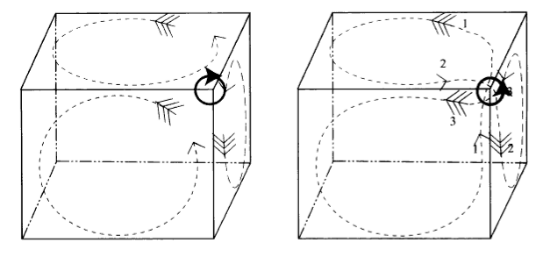The Random Matrix Theory Group
Random Matrix Theory is a paradigm for describing and understanding a variety of phenomena in physics, mathematics, and potentially other disciplines. The theory was born in the early 1950s when theoretical physicist Eugene Wigner suggested that the problem of determining the energy level spacings of heavy nuclei - intractable by analytic means - might be modeled after the spectrum of a large random matrix. Originally conceived of as a statistical approach to systems with many degrees of freedom, Random Matrix Theory also applies to systems with few degrees of freedom whose classical dynamics is chaotic; in fact, Random Matrix Theory lies at the heart of one of the basic conjectures in Quantum Chaos. Formulated by Bohigas, Giannoni, and Schmit in 1984, this conjecture asserts that the eigenvalues of a quantized chaotic Hamiltonian (after suitable unfolding) behave like the spectrum of a typical member of the appropriate ensemble of random matrices.

From T. Ehrhardt, The asymptotics a Bessel-kernel determinant which arises in Random Matrix Theory, arXiv:1001.2340.
Torsten Ehrhardt's research focuses on operator theory, in particular on the asymptotic spectral theory of Toeplitz and Hankel operators and their continuous analogues and generalizations. He is also interested in harmonic analysis, Banach algebras, and Wiener-Hopf factorization. He and I. Krasovsky (independently) proved a 30 year old conjecture of Freeman Dyson concerning the asymptotics of the sine kernel Fredholm determinants. These determinants describe the level spacing distribution of the GUE eigenvalues. Other aspects of his research are also motivated by applications to statistical physics and Random Matrix Theory. He has worked on a conjecture by Fisher and Hartwig raised in 1968, which concerns the asymptotics of Toeplitz determinants with singular symbols. Such determinants arise frequently in connection with Ising and dimer models. The asymptotics of Toeplitz-plus-Hankel determinants and their continuous analogues, which he has been investigating recently together with E.L. Basor, are related to specific random matrices models.

The 1-skeleton of the cube. The usual orientation is shown on the left, with a changed orientation of the upper right vertex. From: A. Gamburd, 2006, Poisson-Dirichlet Distribution for Random Belyi Surfaces, Annals of Probability 34 (5): 1827-1848.
Harold Widom (UCSC, deceased) and Craig Tracy (of UC Davis) have made basic contributions to the theory. There are three basic classes of Random Matrix models, known as "GUE, GOE, and GSE", for Gaussian Unitary, Orthogonal, and Symplectic ensembles, according to the type of matrix which is to be randomly selected. The limiting distribution (as the size of the matrix tends to infinity) for the largest eigenvalue in the GUE model had been computed via a Fredholm determinant by physicists. Widom and Tracy obtained the limiting distributions in the GOE and GSE models in terms of Fredholm determinants. They also showed that all three limiting distributions were representable in terms of Painleve functions, hence establishing connections to the theory of integrable dynamical systems. The resulting distributions are now universally known as the Tracy-Widom distributions. They are believed to describe new universal limit laws for a wide variety of processes arising in mathematical physics and interacting particle systems. The distribution is destined to play an increasingly important role, akin to the bell curve, or normal distribution so familiar in statistics and probability.
